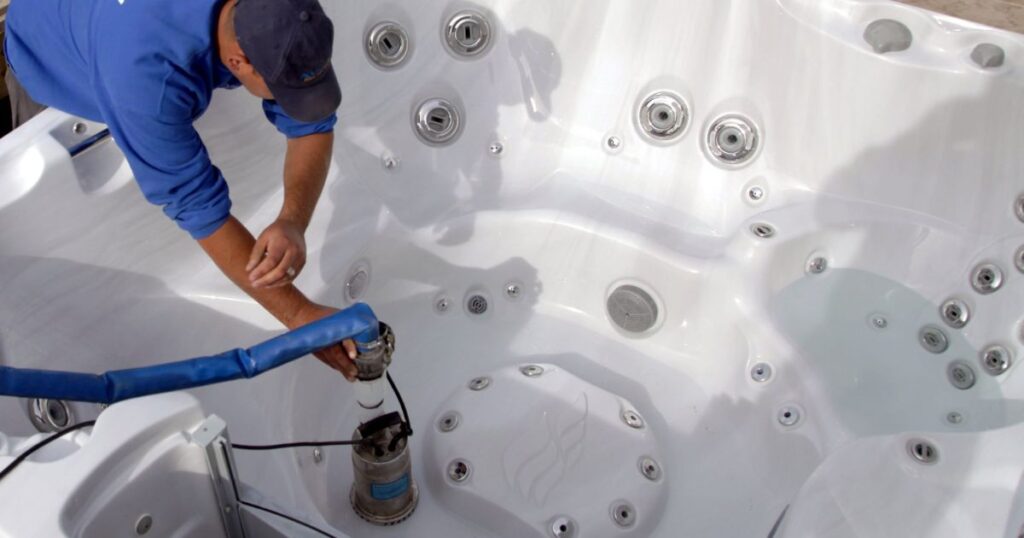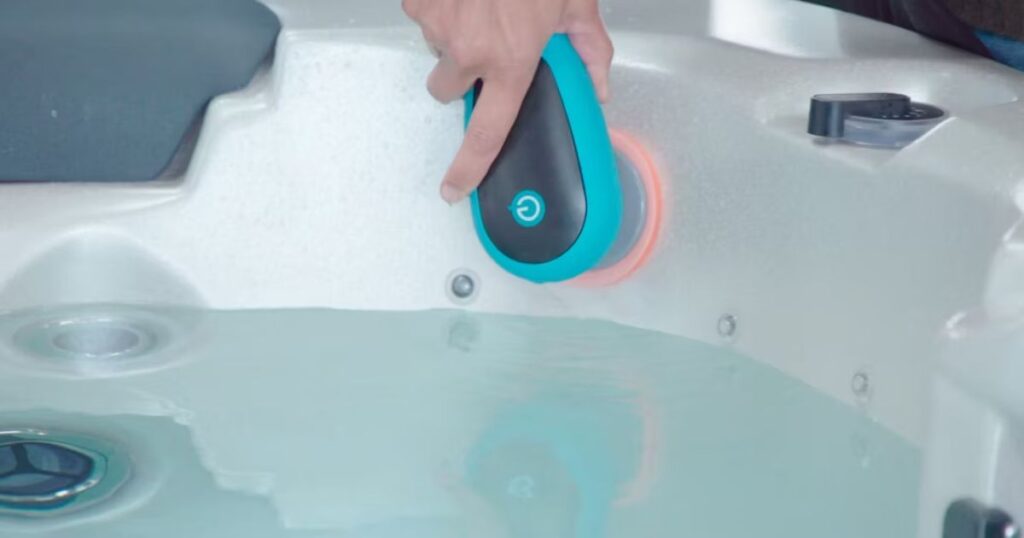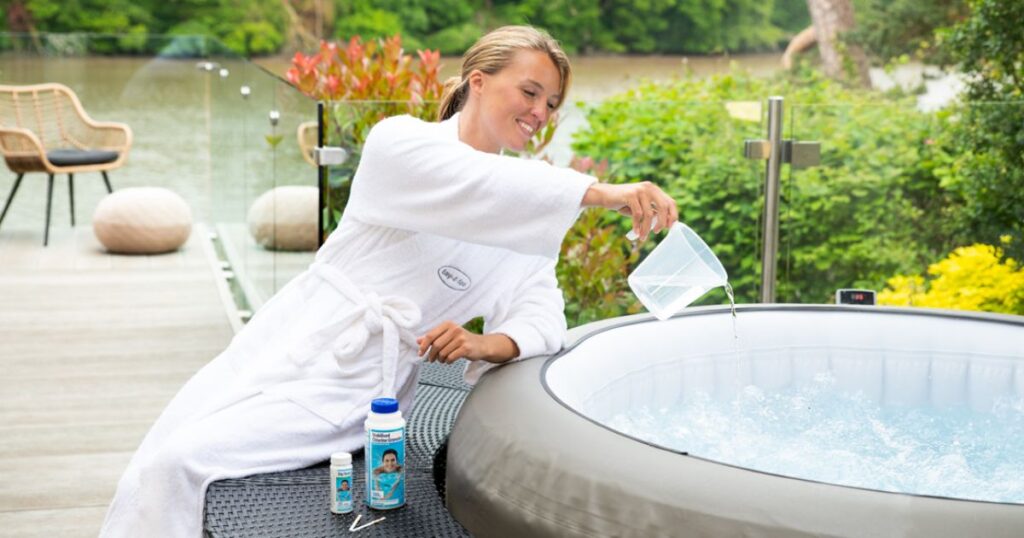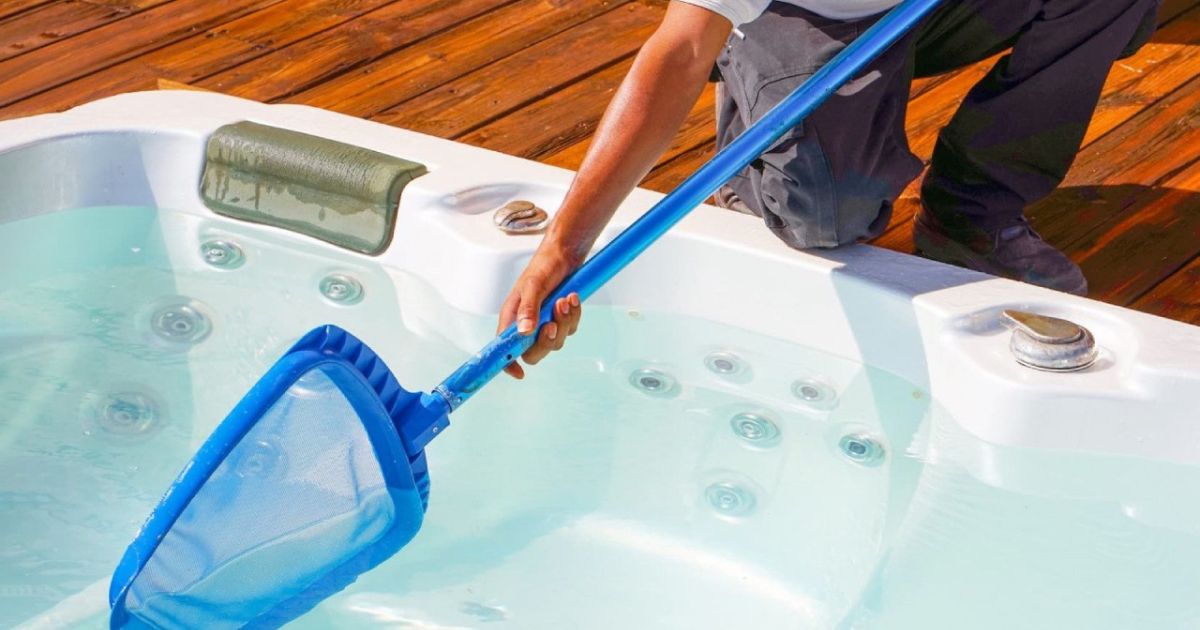Cleaning your hot tub is crucial for maintaining its performance and ensuring a safe, hygienic soak every time. Regular maintenance not only prolongs the tub’s lifespan but also enhances your overall experience. From scrubbing the surfaces to balancing chemicals, a proper cleaning routine keeps bacteria at bay and prevents potential issues.
This guide simplifies the process, breaking it down into manageable steps. You’ll learn how to drain, clean, sanitize, and refill your hot tub effectively. Additionally, it covers essential safety precautions and tips for maintaining filters and chemical balance.
Whether you’re a seasoned hot tub owner or a newcomer, mastering these cleaning techniques will help you enjoy a sparkling clean and inviting tub, offering relaxation without worries.
Preparation and Safety Measures
Preparing to clean your hot tub involves several essential safety measures to ensure a smooth and secure cleaning process. Prior to starting any maintenance work, turn off the power supply to the hot tub. This step is crucial to prevent any electrical accidents. Moreover, disconnecting the power reduces the risk of damage to the equipment while you clean.
Additionally, wear appropriate protective gear such as gloves and goggles to shield yourself from potential chemical exposure or irritants. Ensure proper ventilation in the area to prevent the buildup of fumes from cleaning agents.
Furthermore, refer to the manufacturer’s manual or guidelines for specific safety instructions tailored to your hot tub model. Adhering to these safety measures will help create a secure environment while you proceed with the cleaning process, safeguarding both you and the hot tub.
Draining the Hot Tub

Draining the hot tub is a fundamental step in its maintenance. Start by turning off the power to the tub to prevent any electrical mishaps. Locate the drain valve, typically found at the tub’s base, and attach a garden hose to it for efficient drainage. Ensure the other end of the hose leads to a suitable drainage area, ideally away from plants or areas prone to damage from water runoff.
Open the drain valve carefully, allowing the water to flow out steadily. Depending on the tub’s size, this process may take several hours. To expedite drainage, use a submersible pump if available.
Once the tub is empty, inspect it for any debris or residue. Use a non-abrasive cleaner and a soft cloth to wipe down the surfaces, removing any buildup or grime. Rinse thoroughly to ensure all cleaning agents are completely removed before proceeding to the next cleaning steps.
Cleaning the Tub Surface

Cleaning the surface of your hot tub is essential for maintaining its appearance and hygiene. Begin by using a gentle, non-abrasive cleaner suitable for the tub’s material—avoid harsh chemicals that might damage the surface. Apply the cleaner generously onto the surfaces, focusing on areas prone to buildup, such as water lines and corners.
Using a soft sponge or cloth, gently scrub the entire surface, working in circular motions to dislodge any dirt or residue. Pay particular attention to any stubborn stains or areas with accumulated grime. For textured surfaces, a soft-bristled brush can help reach into crevices without causing damage.
Rinse the tub thoroughly with clean water to remove the cleaning solution and any loosened debris. Ensure all traces of the cleaner are completely washed away before proceeding to the next steps in the cleaning process. This step leaves your hot tub’s surface clean, ready for further maintenance and sanitization.
Sanitizing and Disinfecting

Sure, here are the steps for sanitizing and disinfecting your hot tub in points:
Choose the Right Sanitizer
Selecting the appropriate sanitizer is crucial for hot tub maintenance. Chlorine or bromine-based sanitizers are commonly used, each with unique properties. Chlorine effectively kills bacteria and oxidizes contaminants, while bromine is more stable at higher temperatures and pH levels. Consider your hot tub’s specific needs, size, and usage frequency to choose the sanitizer that best suits your requirements for maintaining clean and hygienic water.
Follow Manufacturer’s Guidelines
Adhering to the manufacturer’s guidelines is pivotal for proper hot tub maintenance. These instructions outline specific dosages, cleaning agents, and procedures tailored to your tub’s model. Following these guidelines ensures optimal performance, prevents damage, and maintains warranty validity. It’s crucial to heed these directives for effective cleaning, sanitizing, and overall upkeep, safeguarding both your hot tub’s longevity and your enjoyment.
Even Distribution
Even distribution of sanitizer in your hot tub is crucial for comprehensive cleanliness. Ensure the sanitizer is thoroughly mixed and dispersed throughout the water. Running the tub’s circulation system effectively spreads the sanitizer, reaching every corner and ensuring consistent protection against bacteria and contaminants. This even distribution maintains water hygiene, providing a safe and enjoyable soaking experience for you and your guests.
Consider Shock Treatment
Shock treatment for your hot tub is a potent method to deeply cleanse the water. This process involves using a specialized treatment product to break down organic matter, bacteria, and other contaminants that regular sanitizers might miss. Implementing shock treatment periodically helps maintain water clarity, eliminates stubborn impurities, and ensures a more thorough sanitization, contributing to a healthier and more enjoyable hot tub experience.
Regular Testing
Regular testing of your hot tub water is essential for maintaining optimal sanitation levels. Use testing strips or a kit to check the water’s pH and sanitizer levels frequently. This routine ensures the sanitizer remains effective in eliminating bacteria and contaminants while balancing pH levels for a safe and comfortable soak. Regular testing allows prompt adjustments, keeping the water clean and suitable for a relaxing hot tub experience.
Follow Maintenance Schedule
Adhering to a consistent maintenance schedule is pivotal for preserving your hot tub’s cleanliness and functionality. Follow the manufacturer’s guidelines or a professional’s recommendations for routine tasks like filter cleaning, water testing, and chemical balancing. Regular maintenance ensures optimal water quality, prevents issues, and extends the hot tub’s lifespan, allowing for continued enjoyment without unexpected disruptions.
Filter Maintenance and Cleaning
Filter maintenance is crucial for keeping your hot tub water clean and free of debris. Follow these steps for effective filter cleaning:
Turn off the Power
Turning off the power to your hot tub before any maintenance is crucial for safety. Locate the power source or circuit breaker dedicated to the tub and switch it off to cut electricity flow. This precaution prevents accidental electrical shocks or equipment damage while you work on the hot tub. Always verify that the power is completely off by checking that the tub’s lights or any other electrical components are non-operational before proceeding with maintenance tasks.
Remove the Filter
Removing the filter from your hot tub is a crucial step in its maintenance routine. Start by turning off the power to ensure safety, then locate the filter compartment. Carefully extract the filter cartridge or elements, taking note of their position for proper reinstallation. This allows you to perform a thorough cleaning, ensuring the filter effectively removes contaminants from the water. Regularly removing and cleaning the filter extends its lifespan and maintains the hot tub’s water quality.
Rinse with Water
Rinsing the hot tub filter with water is a vital step in its maintenance. Using a garden hose, thoroughly spray the filter, focusing on removing visible dirt and debris trapped within its fibers. A high-pressure nozzle or attachment can help dislodge stubborn particles. Ensure the water pressure isn’t too intense, preventing damage to the filter. This initial rinse eliminates surface contaminants, preparing the filter for deeper cleaning or soaking with specialized filter cleaner solutions when needed.
Deep Cleaning
Deep cleaning your hot tub involves a thorough process to eliminate stubborn grime and buildup. Utilize a specialized hot tub cleaner or a mixture of mild detergent and water to scrub the surfaces meticulously. Target hard-to-reach areas and water lines where residues accumulate. Rinse the tub thoroughly, ensuring no cleaning agents remain. This intensive cleaning not only enhances the tub’s appearance but also eradicates hidden contaminants, ensuring a fresh and inviting hot tub experience.
Final Rinse and Drying
After cleaning your hot tub filter, ensure a thorough final rinse to remove any residue from the cleaning solution. Use a garden hose or a gentle spray to completely wash away all remnants of the cleaner. Once rinsed, allow the filter to air dry entirely before reinstalling it into the hot tub. Ensure it dries completely to prevent any moisture from accumulating, which could lead to mold or bacterial growth within the filter, ensuring optimal filtration efficiency.
Regular Inspection
Regular inspections of your hot tub are essential for identifying issues early and ensuring its optimal functionality. Periodically check for leaks, loose fittings, or signs of wear in the tub’s structure. Inspect the water quality, ensuring it’s clear and balanced. Additionally, examine the cover for damage or deterioration and inspect the filtration system for clogs or inefficiencies. Addressing any problems promptly through routine inspections helps maintain a safe, enjoyable, and trouble-free hot tub experience.
Final Checks and Operational Tips
Final checks and operational tips are crucial for ensuring your hot tub is ready for use and functions smoothly:
- Cover Inspection: Verify the cover’s integrity, ensuring it’s securely in place and free from damage to retain heat and keep debris out.
- Water Level: Confirm the water level is within the recommended range, adjusting if necessary for optimal performance.
- Temperature Settings: Set the water temperature to your preference, balancing comfort and energy efficiency.
- Air Jets and Controls: Test the air jets and controls to ensure they’re functioning correctly for a relaxing experience.
- Safety Measures: Review safety guidelines and precautions, emphasizing proper usage to all users.
- Regular Maintenance Reminder: Set reminders for routine maintenance tasks to uphold cleanliness and performance.
Following these final checks and operational tips ensures a safe, enjoyable, and hassle-free hot tub experience for you and your guests.
Pros and Cons
Certainly! Here’s a chart outlining the pros and cons of cleaning a hot tub:
| Pros | Cons |
| 1. Maintains hygiene | 1. Time-consuming process |
| 2. Prolongs tub’s lifespan | 2. Requires regular attention |
| 3. Ensures safe use | 3. Chemical handling risks |
| 4. Improves water quality | 4. Potential for costly repairs |
| 5. Enhances user experience | 5. Initial learning curve |
| 6. Prevents equipment damage | 6. Occasional need for specialized tools |
Regular cleaning and maintenance significantly contribute to a safe and enjoyable hot tub experience, although it may involve time, effort, and occasional challenges associated with handling chemicals or specific tools.
FAQ’s
What is the best thing to clean a hot tub with?
After draining your hot tub, wipe away any sediments, dirt or debris with a damp cloth. We highly recommend using a surface cleaner and a soft cloth. Or, for stubborn marks, try a tub scrubber. Top tip: Never clean your spa with regular household cleaning products.
What is the fastest way to clean a hot tub?
The fastest way to clean a hot tub is to first remove any debris from the water. Using a soft damp cloth clean any marks from the sides of the tub, and wipe the control panel and pillows. Wipe down the cover, too. You should also check the levels using test strips and add chemicals as necessary.
How do you clean a hot tub after sitting?
Drain the hot tub completely to remove any standing water. Use a mild, non-abrasive cleaner to scrub the interior surfaces of the hot tub, including the walls, seats, and floor. Be sure to use a cleaner that is safe for the hot tub’s material. Rinse the hot tub thoroughly to remove any remaining cleaner.
How do I keep my hot tub clean naturally?
Installing a salt water system is how to keep hot tub water clean naturally without using any irritating chemicals. The salt in the water will develop into natural chlorine in the tubes of the spa. This system does not require the addition of either chlorine or bromine to keep the water clean.
What chemical do you use to clean a hot tub?
Chlorine – this is the most popular choice as it’s fast acting at killing bacteria. Check out our chlorine hot tub maintenance guide to learn more. Bromine – this is ideal for people with sensitive skin. Find out more about maintaining your hot tub using bromine in our guide.
Conclusion
Cleaning your hot tub isn’t just about aesthetics—it’s a vital aspect of responsible ownership. By dedicating time to regular maintenance, you’re ensuring a safe, hygienic, and enjoyable environment. Proper cleaning not only extends the tub’s lifespan but also safeguards against potential issues, enhancing your overall relaxation experience.
Though it requires effort and adherence to a routine, the benefits far outweigh the challenges. A sparkling, well-maintained tub minimizes health risks, promotes water quality, and prevents damage to essential components. It also sets the stage for worry-free relaxation, allowing you to immerse yourself in comfort.
Remember, each cleaning step, including how to drain a hot tub, plays a crucial role in the tub’s upkeep, from surface scrubbing to chemical balancing and filter maintenance. By following these guidelines and incorporating a consistent cleaning schedule, you’re not just preserving a hot tub—you’re nurturing a sanctuary for relaxation and rejuvenation, ensuring its continual enjoyment for years to come.








